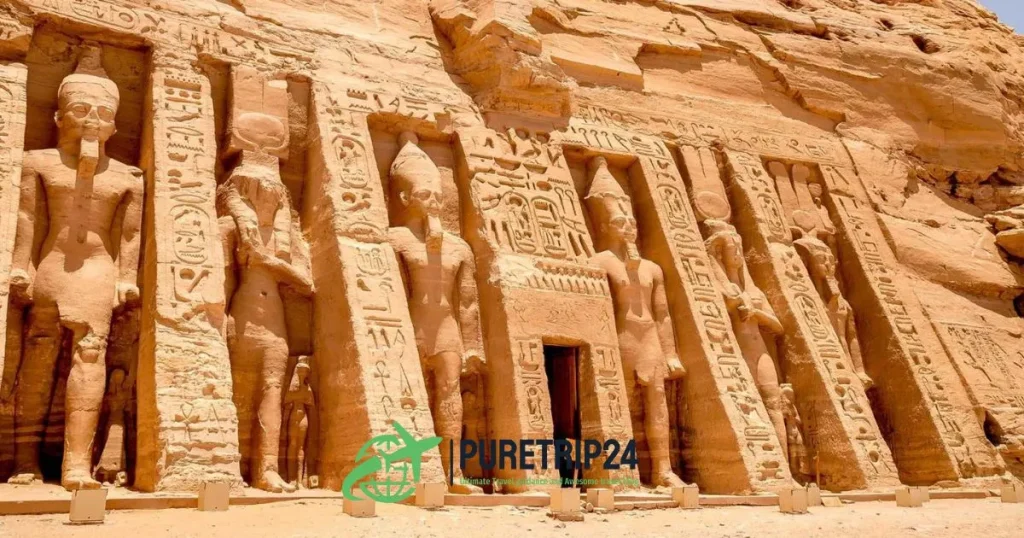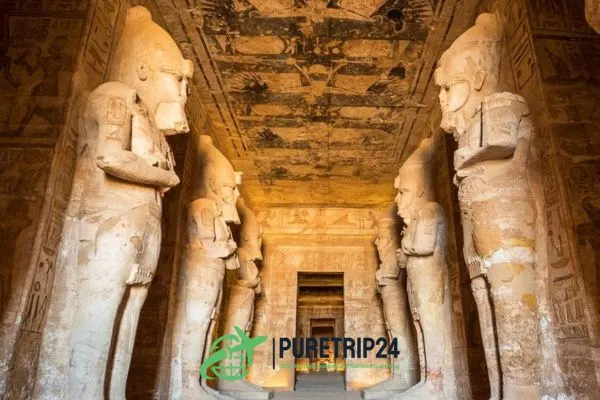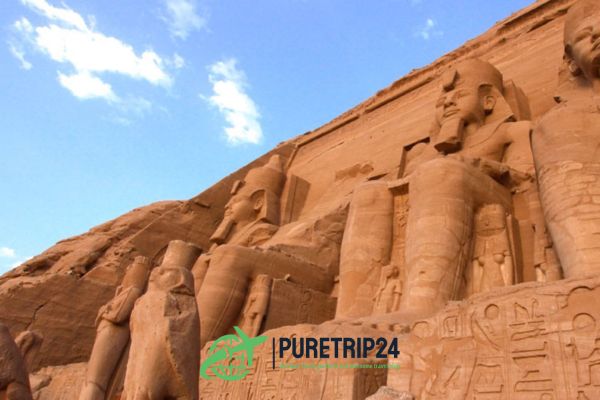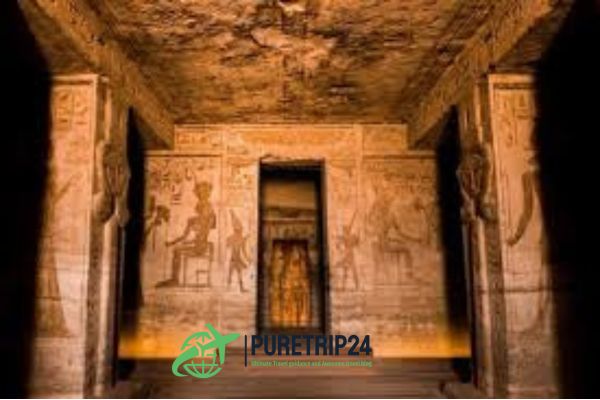
When traveling in Egypt, the amazing temples of Abu Simbel are a must-visit. Ancient Egyptian history and Ramses II’s saga are reflected in these grand examples of rock-cut architecture. You can read this guide to get info, tips, and insight for an unforgettable trip to Abu Simbel.
Why Visit Abu Simbel?
Abu Simbel is a UNESCO World Heritage Site and represents one of Egypt’s most prized archaeological treasures. Built by Ramses II in the 13th Century BC, this site also houses two huge rock temples. The temples primarily were built to celebrate the victory of Ramses II over his enemies, most notably at the Battle of Kadesh, and also as a lasting monument to Pharaoh himself along with the gods Amun Ra, Horakhty, and Ptah. The beauty and monumental scale of the temples are quite impressive, and worth seeing for any type of traveler.
Best Time to Visit Abu Simbel at puretrip24

The perfect moment to visit Abu Simbel is during October and April. This is when temperatures are lower, making it perfect for you to tour. Temperatures in summer can well exceed 40°C (104°F) imposing difficult conditions for any activities outdoors. Prepare to get there early in the morning during peak season because it is going to be crowded and extremely hot.
Top Attractions at Abu Simbel
The Great Temple of Ramses II
The Temple of Ramses is the larger of the two temples and has four gigantic statues of Ramses II on a throne. They tower up at a hefty 20 meters (66 feet) each. In the temple, you will find wonderfully cut reliefs demonstrating Ramses II’s fights and endowments to the divine beings. The alignment of the temple is also interesting; on February 22 and October 22, sunlight reaches into the inner shrine to illuminate statues of Ramses, Amun, and Ra god in the sanctuary.
The Small Temple of Hathor
Next to the big temple, the Small Temple of Hathor is dedicated to Ramses II’s most beloved wife, Queen Nefertiti, and goddess Hathor. The temple holds six giant statues of Ramses II and Nefertari (four lead by two). The detailed carvings inside tell the tales of the love between them and how Ramses was a loving husband as well as an obsessed king.
The Sound and Light Show
Abu Simbel uniquely, in the evening some Sound and Light Show happen here. This is a show about the history of Ramses II and the temples, lighting up colorful lights for the architecture. Getting to experience the majesty and history of this site is magical in itself.
The Aswan High Dam
When you visit Abu Simbel, spend time learning about the Aswan High Dam, which was constructed in the 1960s to control the flooding of the Nile River and to create hydroelectric power. The dam itself is a feat of engineering and has formed Lake Nasser, the largest man-made lake in the world. Just a few hour’s drive from Abu Simbel, the temple offers beautiful views of the lake.
How to Get to Abu Simbel

By Air
Flights from Aswan are the fastest way to get to Abu Simbel The trip is 30 minutes with daily flights of some airlines. Careers guide Sula: booking is suggested, especially during tourist high seasons.
By Road
If you are up for a land trip, you may ride a bus or hire a private car from Aswan. This scenic 3-4 hour drive showcases the arid desert plains of this region. Buses leave early morning to maximize your daylight time at the temples.
Guided Tours
Look into taking a guided tour that often comes with transport, a guide who knows the subject, along with some additional stops at similar attractions. It might provide some perspective on the history and importance of the particular site in question, but it won’t necessarily help you feel more connected to something you’re seeing.
Practical Travel Tips
Entrance Fees
Currently, tourists have to pay 200 EGP to visit Abu Simbel. Keep some cash on you, as credit cards may not always be accepted.
Dress Code
As most people in Egypt are following the religion of Islam, you should dress modestly! Wear lightweight, breathable clothing (appropriate to 30+ degree temperatures at least), but make sure you have your shoulders and knees covered.
Hydration and Sun Protection
Remember to carry lots of water and drink as explore the outdoors Again, due to the strong sun, you should also wear sunscreen, sunglasses, and a wide but not too simple hat.
Local Cuisine
There are very few places to eat near Abu Simbel, so it may be a good idea to bring along some food for snacks OR even better a packed meal. Back in Aswan, treat your taste buds to koshari or ful medames for a local flavor. You can also try molokhia at the smaller local restaurants.
Proposed Itinerary For Abu Simbel

Here is a suggested itinerary to help you plan your visit.
Day 1: Arrival at Aswan and Check on Hotel
This afternoon why not take advantage of some downtime to explore Aswan (including the local markets)?
Day 2: Early flight or drive to Abu Simbel.
Great Temple of Ramses II and Small Temple of Hathor.
In the evening Enjoy the sound and light show.
Day 3: Go to the Aswan High Dam and Lake Nasser
Head back to Aswan for more ancient attractions or if you just want to chill before your next stop.
Conclusion
Abu Simbel — Ancient Egypt In All Its Splendor Home to some of the tallest temples in the world, back to antiquity having not one but two historical names which even historians now have difficulty asserting about whether it was Pallava or Hiranyakashipu and stunningly beautiful surroundings and an amazing history attached to its glory. At PureTrip24,– we wish you the best of luck with this guide on your way to Abu Simbel, and we hope that you are enchanted and fascinated during your journey. Prepare to be amazed by the skill and historical importance of this incredible site!
